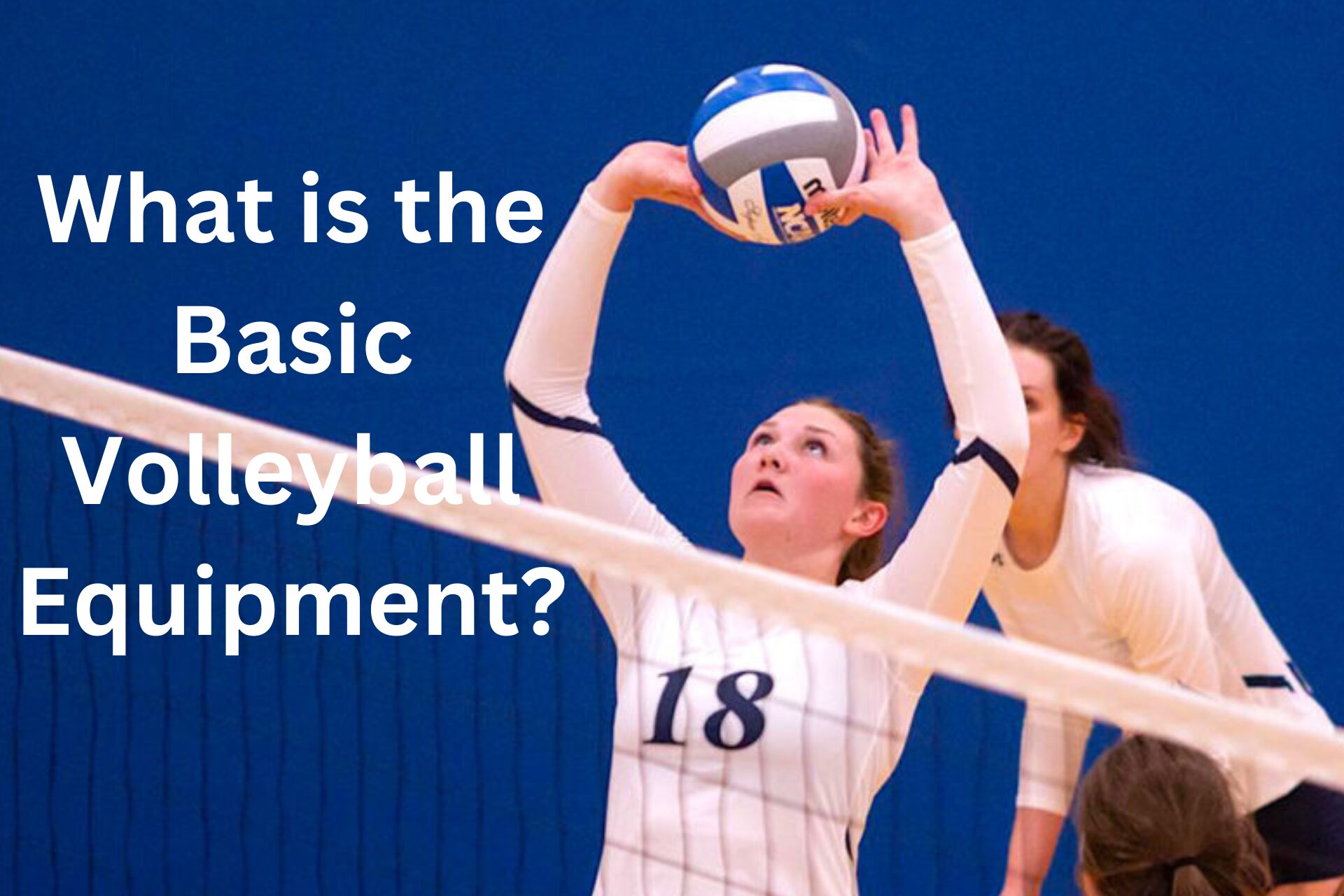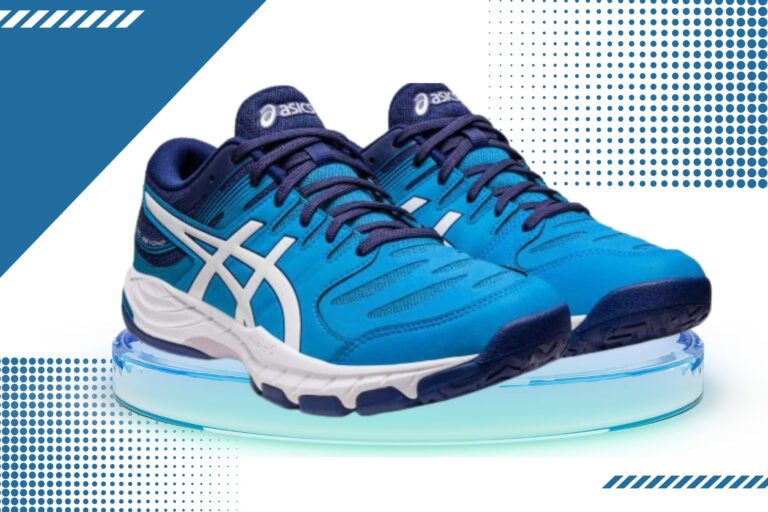What is the Basic Volleyball Equipment? A Detailed Breakdown

Volleyball is a popular sport that originated in America and is currently played by over 800 million people globally in high schools, colleges, and at Olympic events. Over 24 million people in the United States have discovered their love for the game.
Volleyball is a team sport that is also a great way to get in shape. To play a decent game of volleyball and strengthen your game, you’ll need a few basic items of volleyball equipment, no matter whether you want to play in a league or conduct your own pick-up match.
This post will discuss essential volleyball equipment that players of all skill levels, from beginners to experienced players, should consider. Everything will be covered, including volleyball safety gear, specialized footwear, and volleyball itself.
The core gear for volleyball players:
Volleyball
The most important piece of gear for playing volleyball is the volleyball itself. Despite the many different sizes of volleyballs, traditional play requires a ball that is a regulation size.
Indoor volleyball allows for circumferences of 25.6 to 26.4 inches and weights of 9.2 to 9.9 ounces, respectively. Beach volleyball balls, on the other hand, are somewhat larger and lighter to accommodate the different playing conditions on the sand.
When choosing a volleyball, factors including cost, brand, formulation, and design should be considered. High-quality volleyballs are usually made of synthetic leather since it is durable and offers a strong grip.
Net and poles
In professional volleyball matches, a net is used to divide the two teams and indicate the boundaries of the court. The net should be 39 inches wide by 7 feet, 11 5/8 inches tall for men’s play and 7 feet, 4 1/8 inches tall for women’s play.
Investing in a reliable volleyball net that can withstand the rigours of the game is essential. Antennae poles are thin fibreglass rods that extend vertically from the top of the net; they are also necessary for the net.
These antennas can be used by officials and players to determine if the ball has passed the net inside the bounds of the court. They maintain fair play, which makes them vital to the game.
Popular Gear for Competitive Volleyball
Jersey: During formal tournaments, athletes wear numbered jerseys to identify their squad. Choose a jersey that is both pleasant and comfortable to wear.
Shorts: Full range of motion and cosiness are hallmarks of volleyball shorts. They are usually made with moisture-wicking fabrics to keep you dry during strenuous fights.
Socks: Investment in supportive, blister-free socks that wick away moisture is recommended.
Headbands: To keep perspiration out of their eyes and hands during competition, some sportsmen wear headbands or wristbands.
Compression clothing: Compression sleeves, shorts, or tights can help with massive support and recuperation, especially during longer tournaments or competitive play.
Shoes: Jumping, rapid motion changes, and lateral mobility are all necessary in volleyball. To do those things effectively, you must wear the best volleyball shoes. Shoes designed especially for volleyball players provide the comfort, support, and stability required to handle the demands of the game.
Essential protective gear for volleyball
Protective gear must be worn by volleyball teams to keep players safe and healthy throughout this fast-paced, thrilling game. Despite the common perception that volleyball is a contact-free activity, dives, hard spikes, and fast movements can nevertheless result in injury. A more detailed description of the necessary safety gear may be given here:
Volleyball knee pads
Players typically dive or slide across the court to pick up a ball, which increases the risk of knee injury in volleyball. It is advisable to protect your knees against scrapes, bruising, and more severe wounds by using knee protectors. Players may slide and dive without fear of injury because of the support and cushioning provided by knee protectors.
Elbow pads
Elbow guards or arm sleeves may prove useful for volleyball players, in particular liberos. These cushions save athletes’ elbows from more serious injuries and excruciating abrasions when they dive and land on them.
Ankle braces
Ankle braces are commonly used in volleyball as a means of stabilizing and supporting the ankle joint. Volleyball involves a lot of lateral movement, sudden direction changes, and running or jumping, all of which can strain the ankle and increase the chance of injury. Ankle braces provide extra support for athletes who have previously suffered from ankle problems, reducing the risk of sprains.
Training Equipment for Volleyball
A variety of tools and equipment are available to help volleyball players improve their skills, stage better performances, and get more insight into the game. These gears are available to athletes of all experience levels, from beginners to professionals, and they concentrate on various aspects of the volleyball game itself. Some well-liked volleyball training aids are as follows:
Practice nets for volleyball: These are specialized nets with markings and targets to assist players in honing their hitting accuracy and placement. They may be repositioned to different heights and angles to simulate different game circumstances.
Spike trainer: By employing a spike trainer—a device that holds the volleyball in place—players may hone their timing and technique for spiking when there isn’t a setter available. This is especially beneficial for aspiring batters.
Passing and setting targets: Players can use these movable, lightweight targets to be attached to a wall or a partner in order to increase their passing and setting effectiveness. Often, they have target zones assigned to specific passes and sets.
Blocking aids: Blocking is a crucial volleyball skill. Players may hone their execution, footwork, and blocking technique by using equipment like blocking models and blocking pads.
Serving machines: Designed to provide precise, consistent serving at a variety of speeds and angles, serving machines allow players to hone their picking-up techniques.
Conclusion;
Volleyball doesn’t require a lot of equipment, but having the right gear might help you play better and stay safer. Investing in appropriate volleyball equipment like the right ball, net, shoes, and protective clothes is vital, no matter whether you’re playing for fun or competing at a competitive level. By selecting top-notch gear that suits your demands and playing style, you can maximize your gaming experience and reduce your risk of injury.




